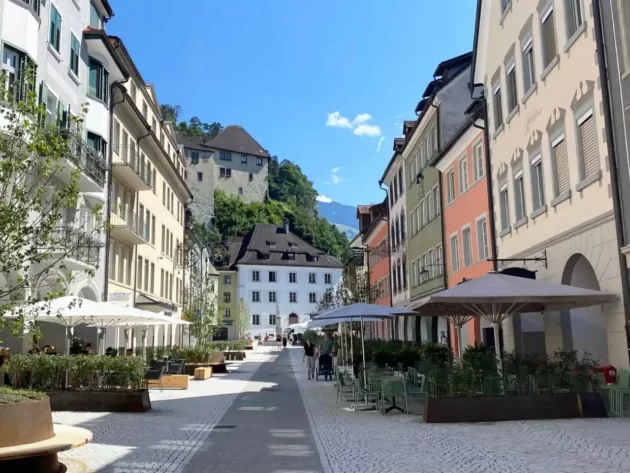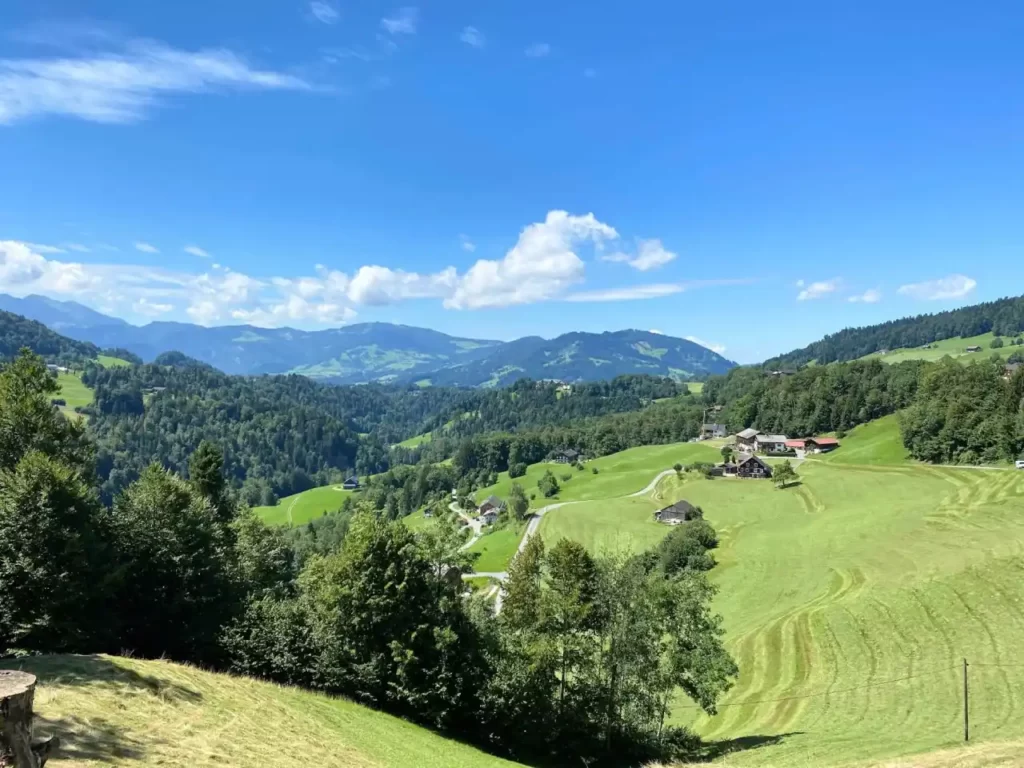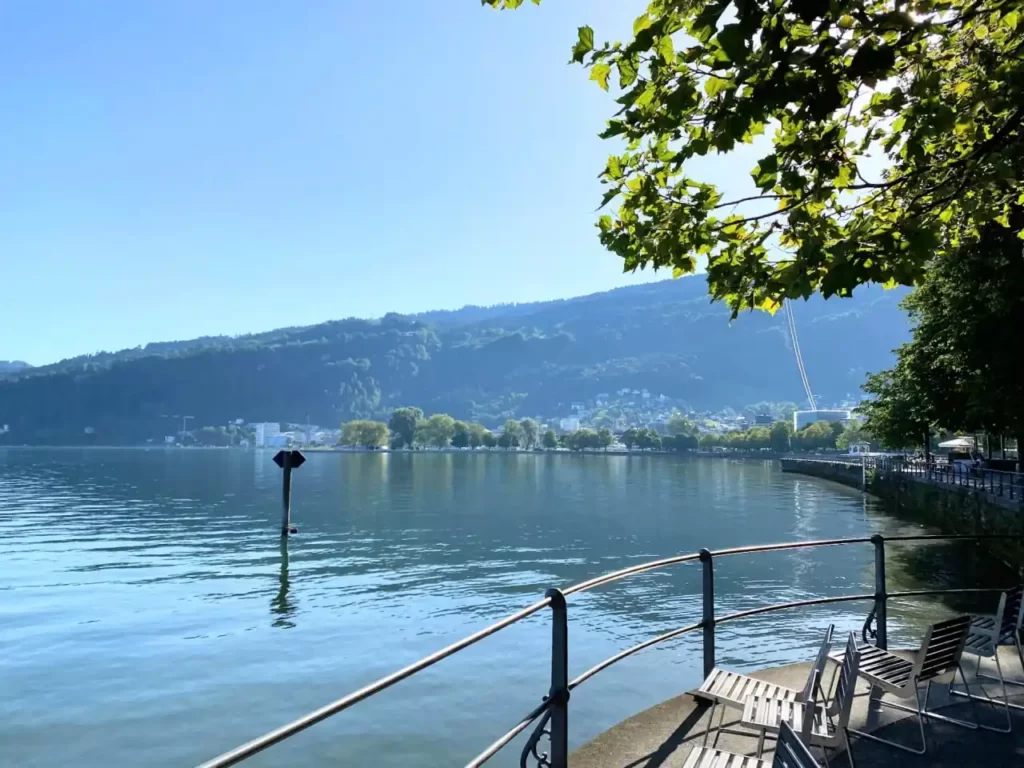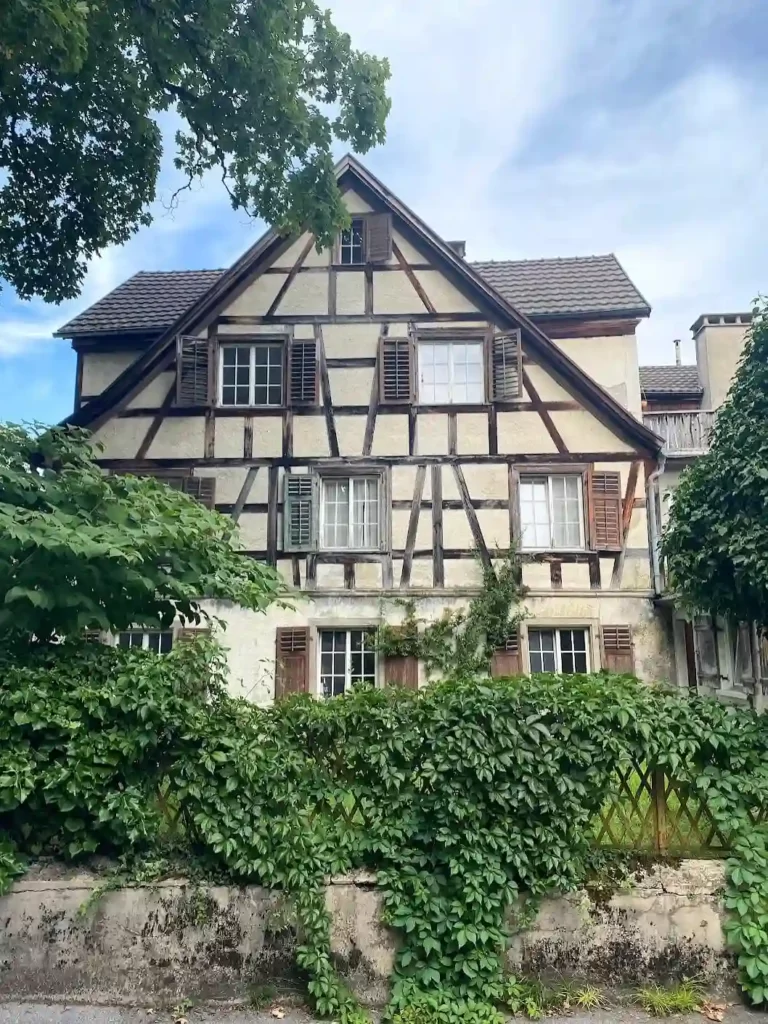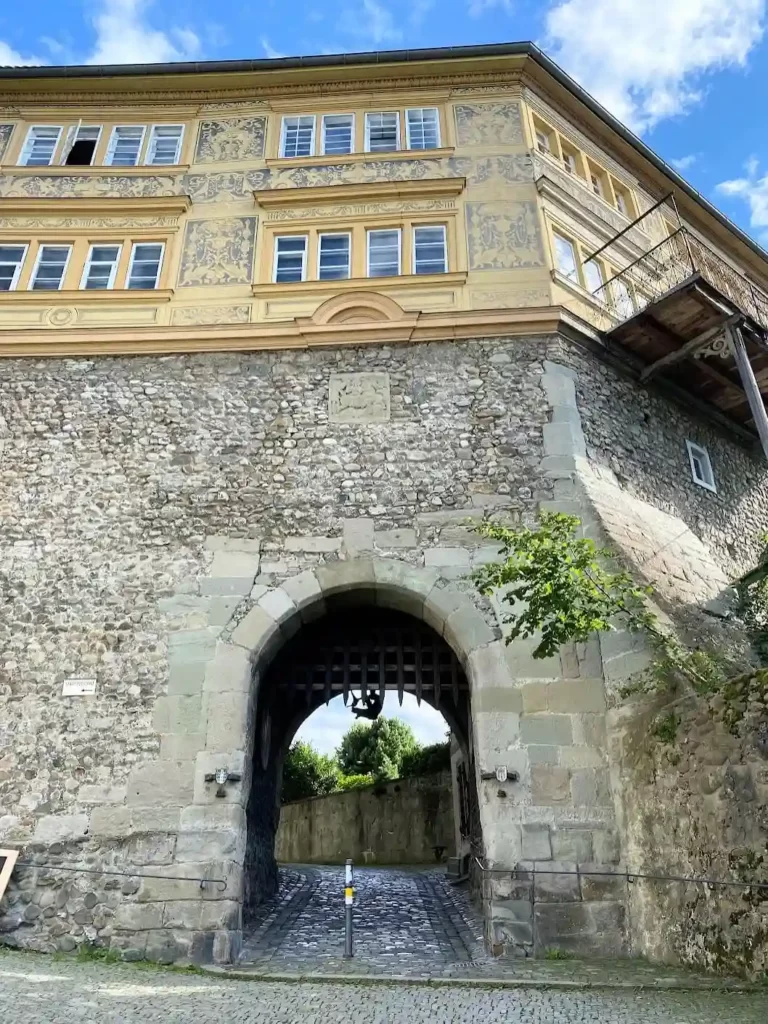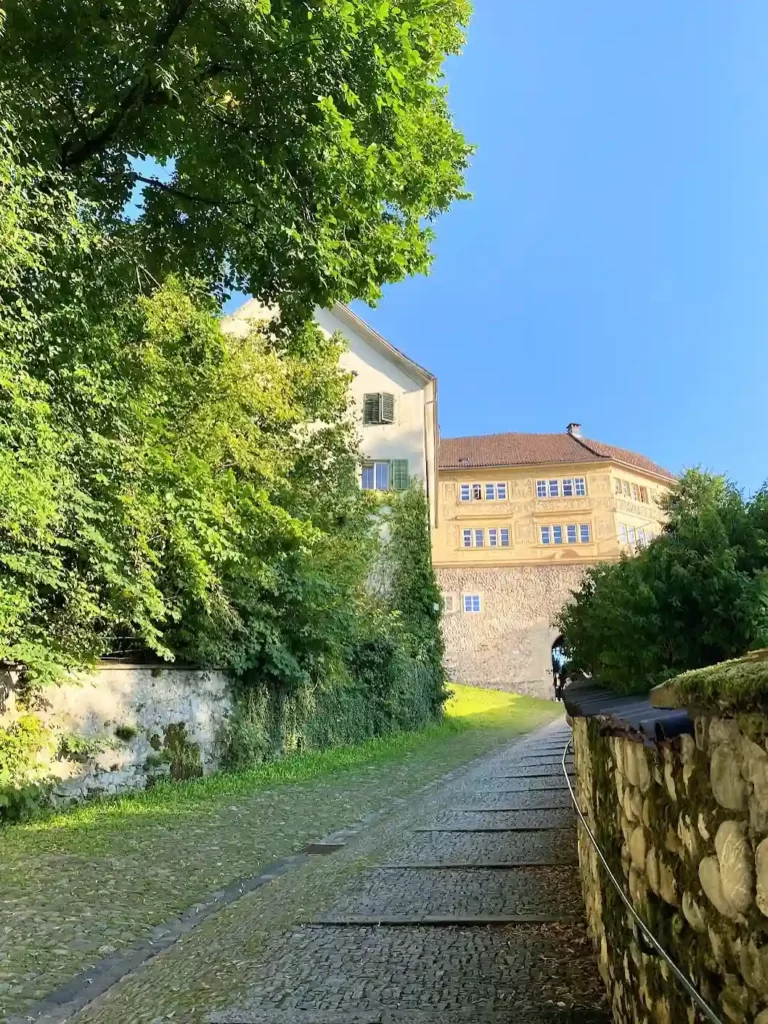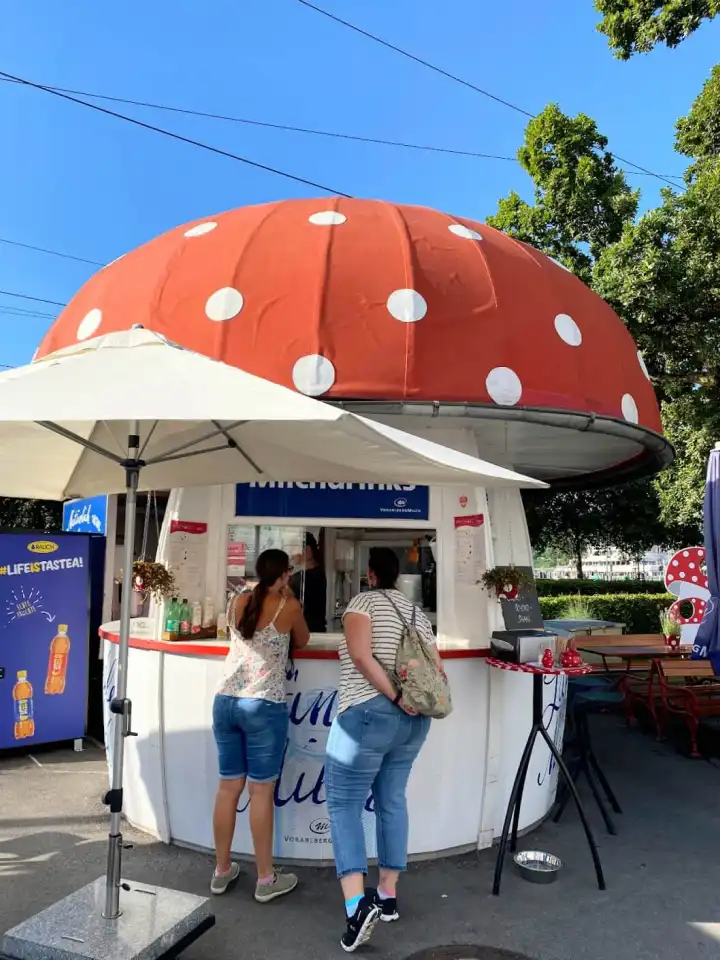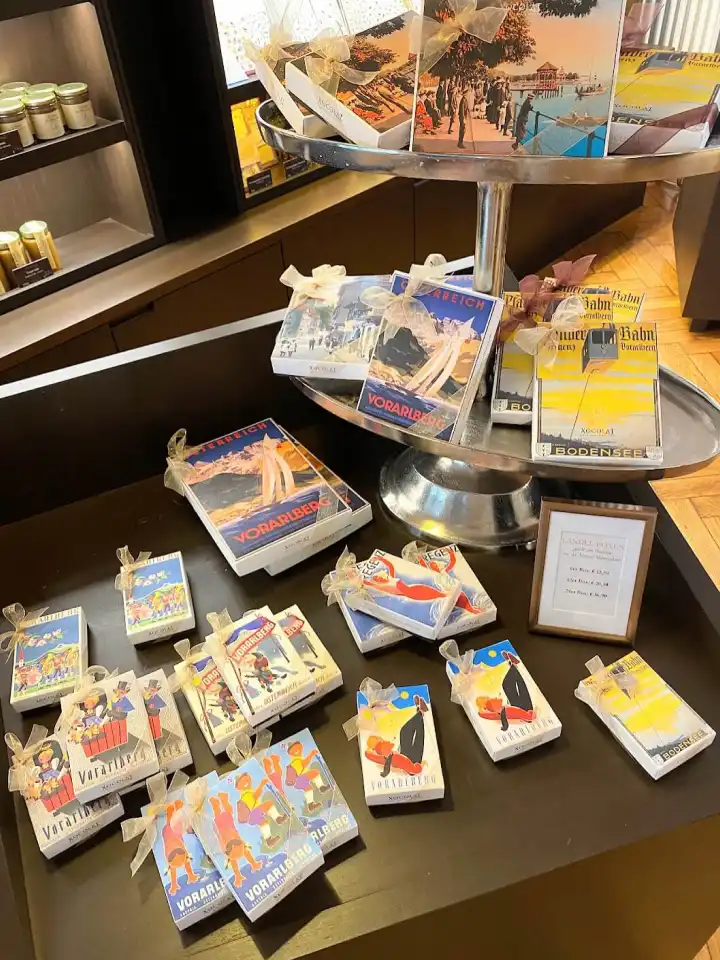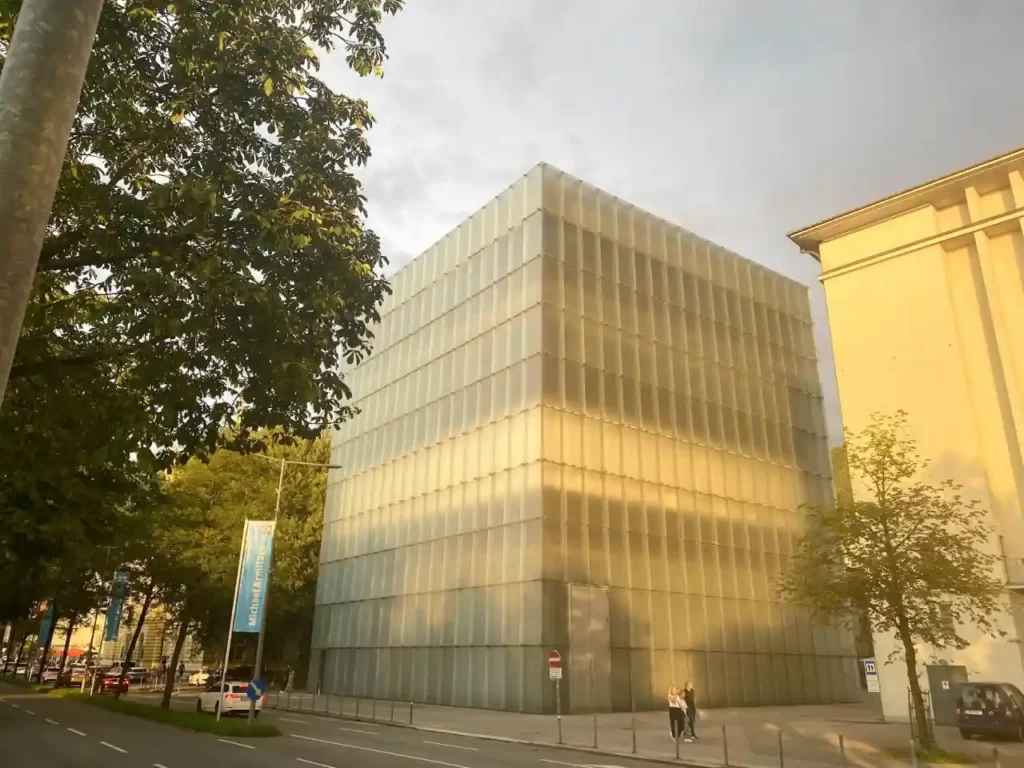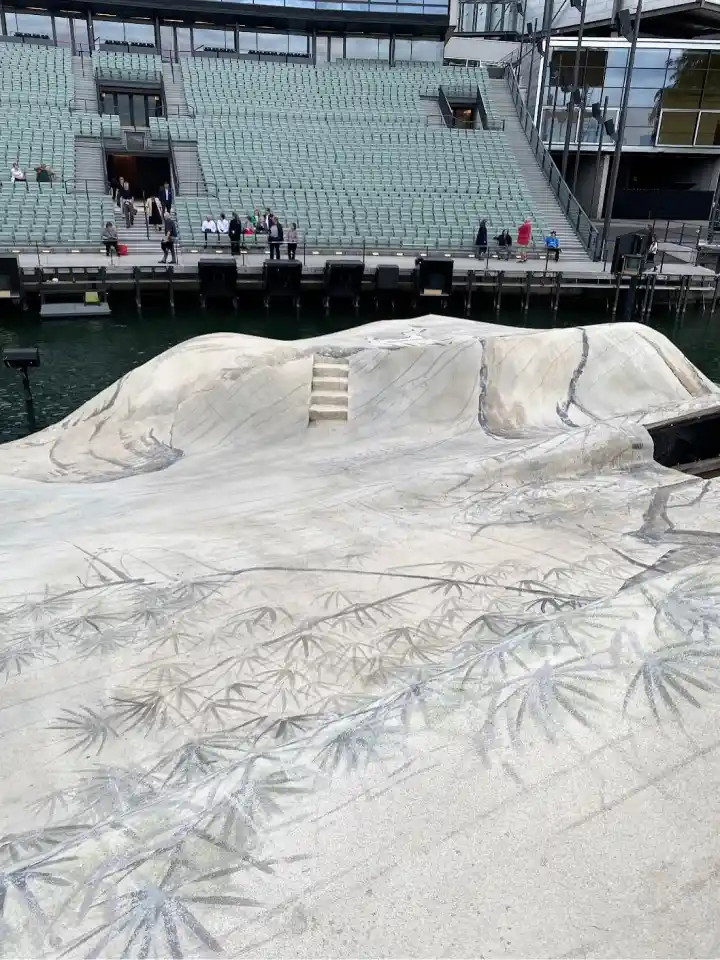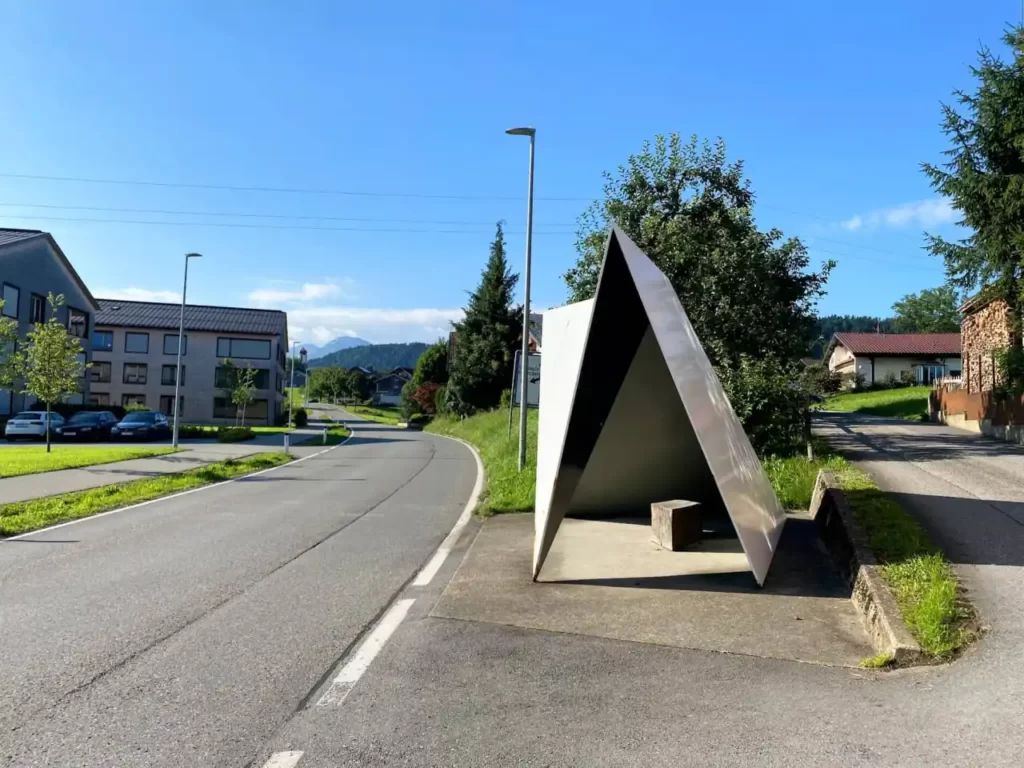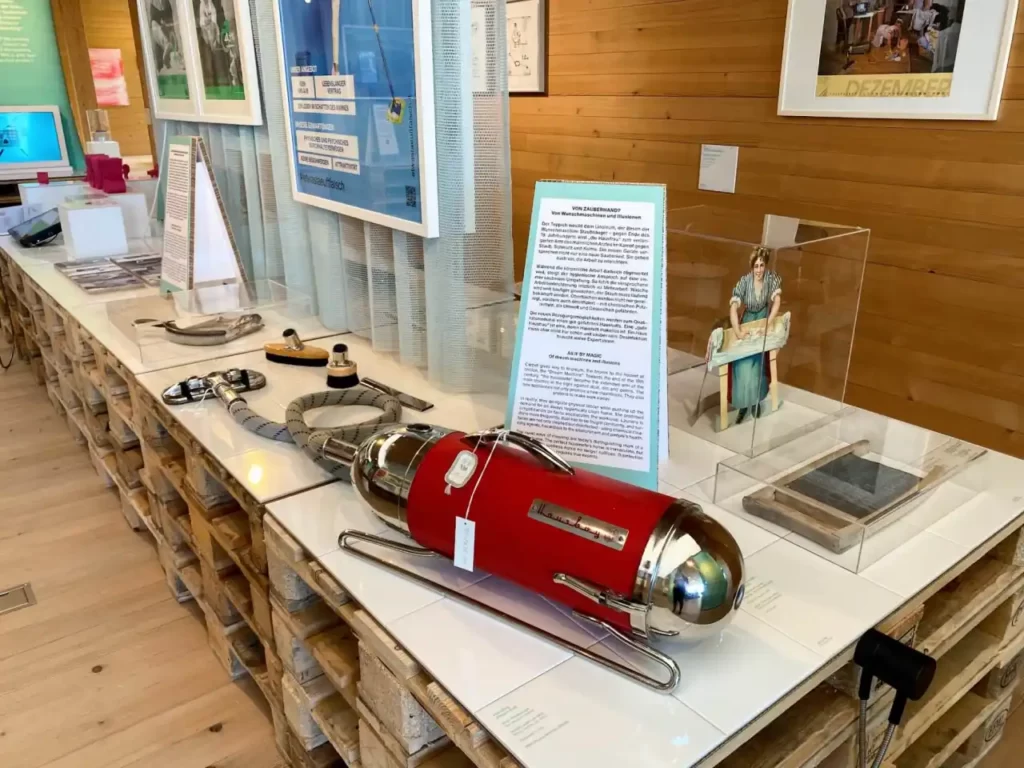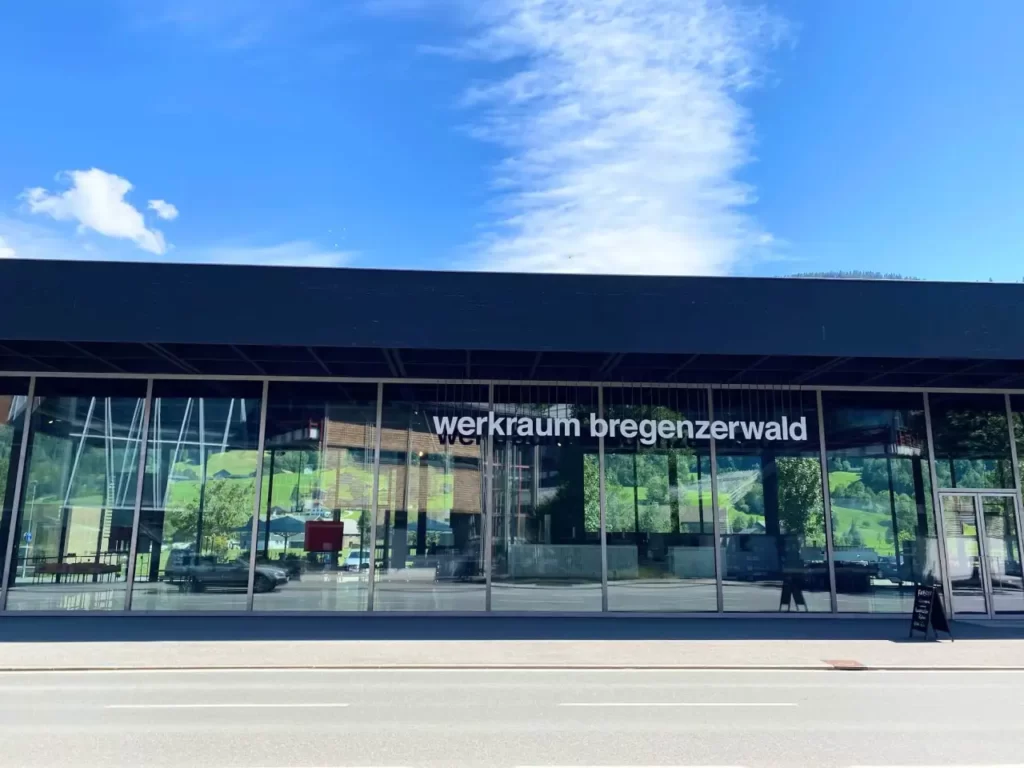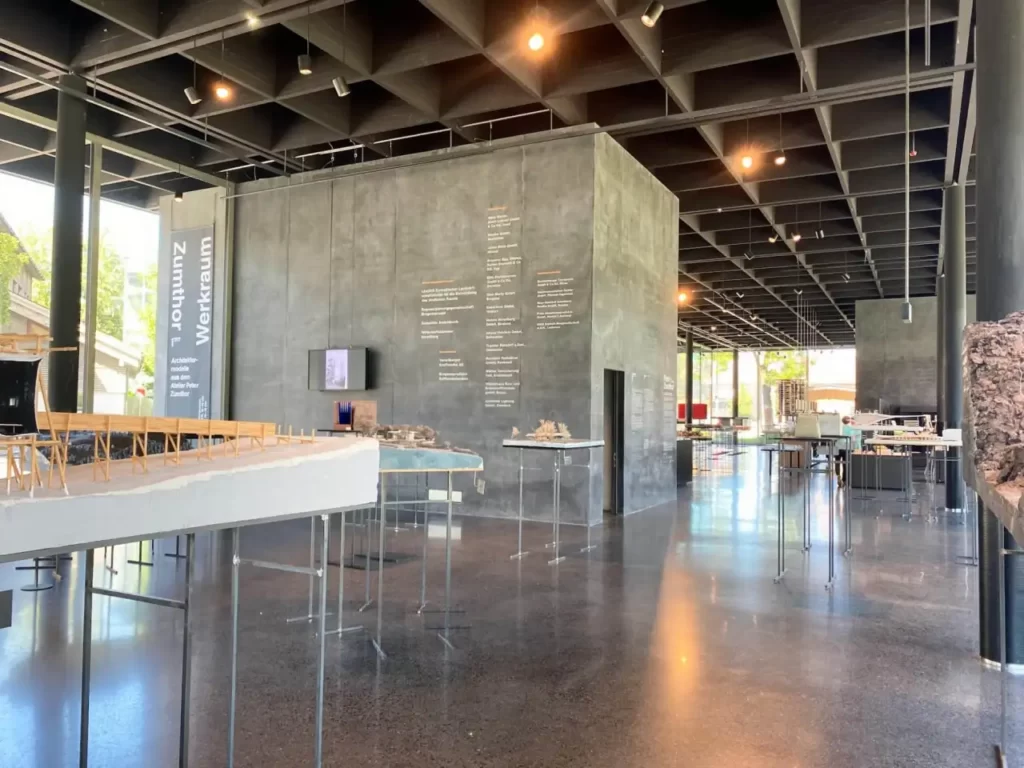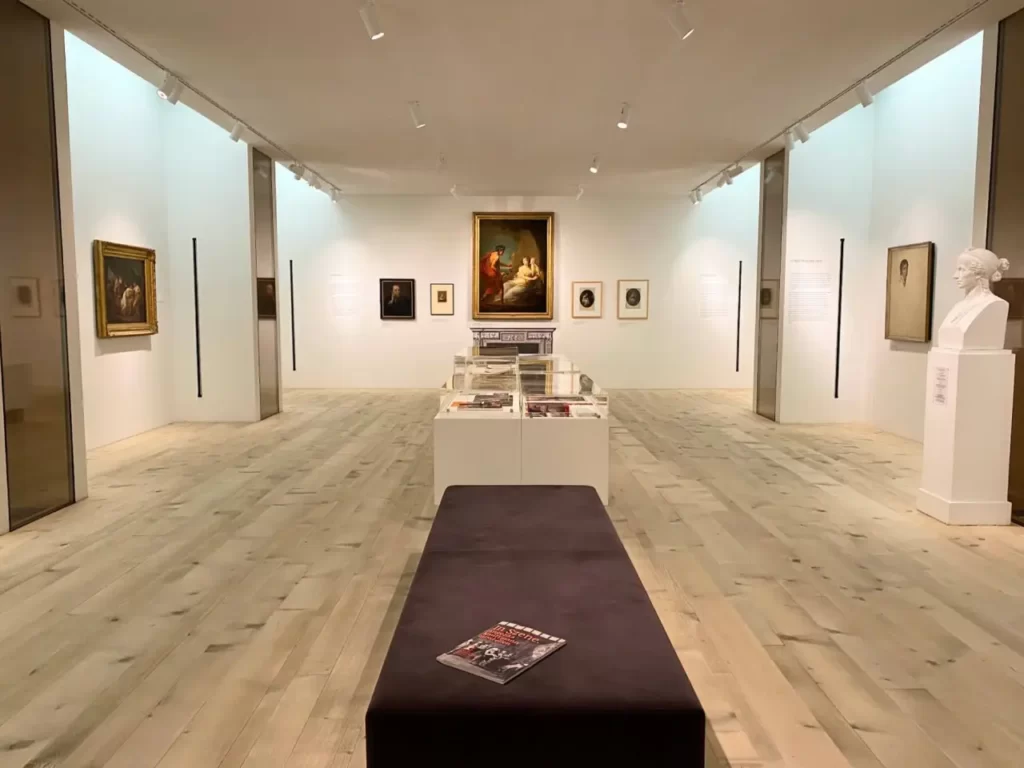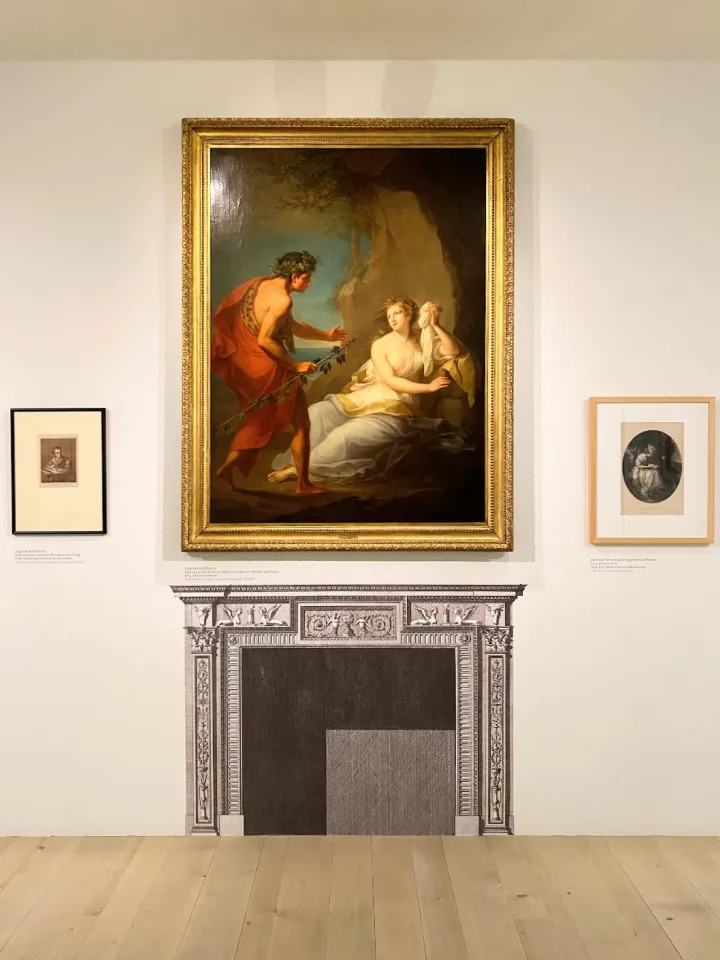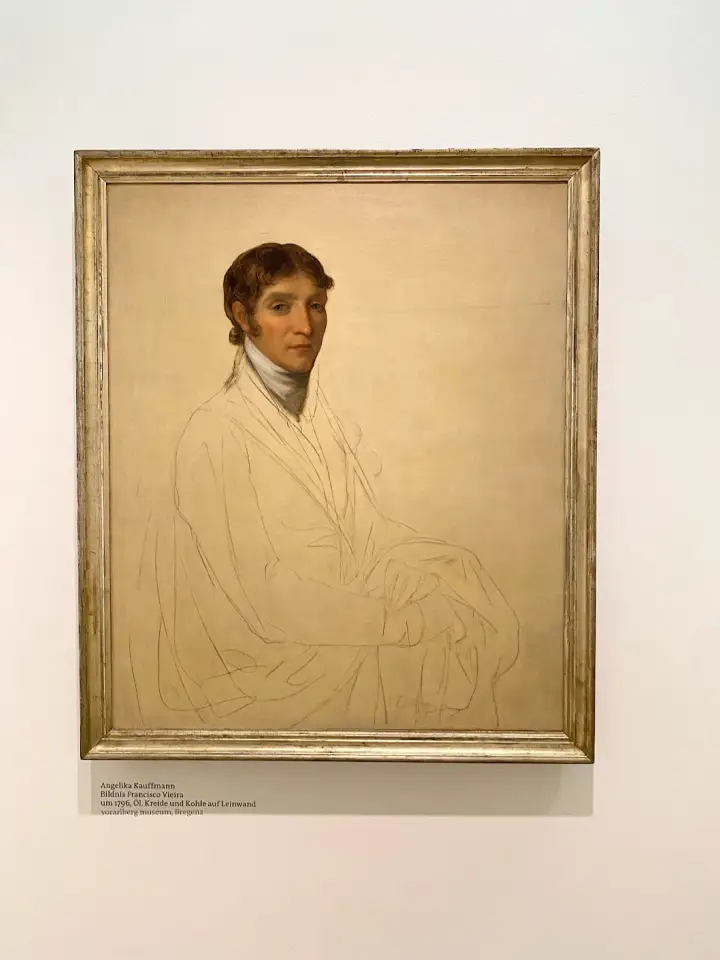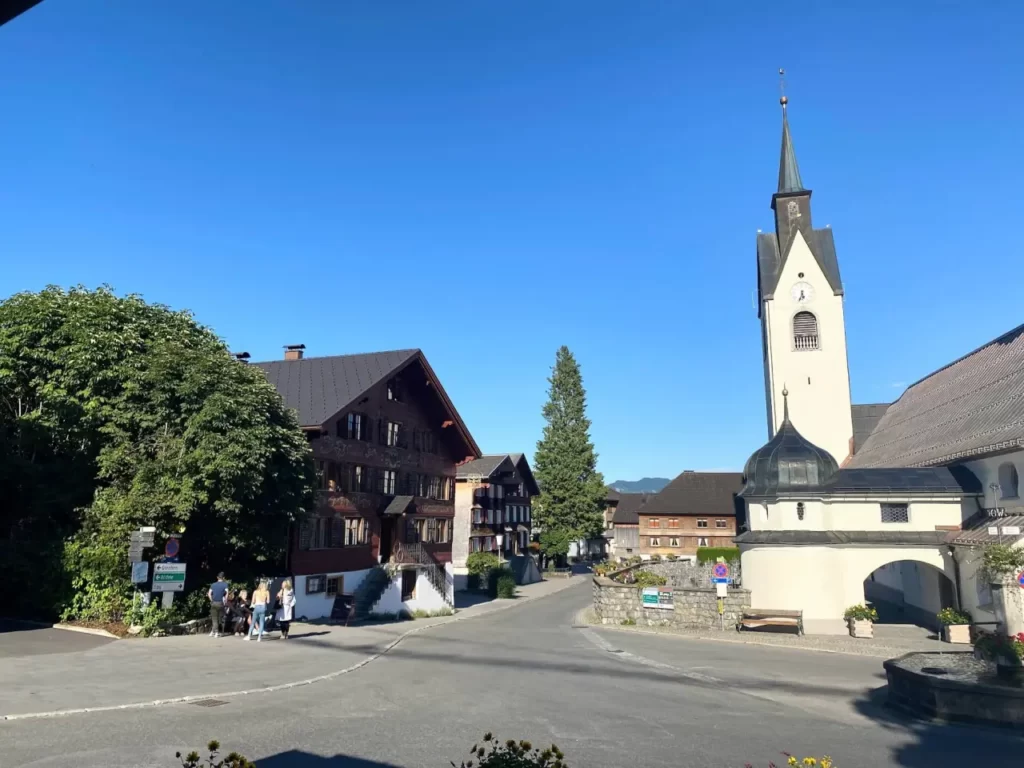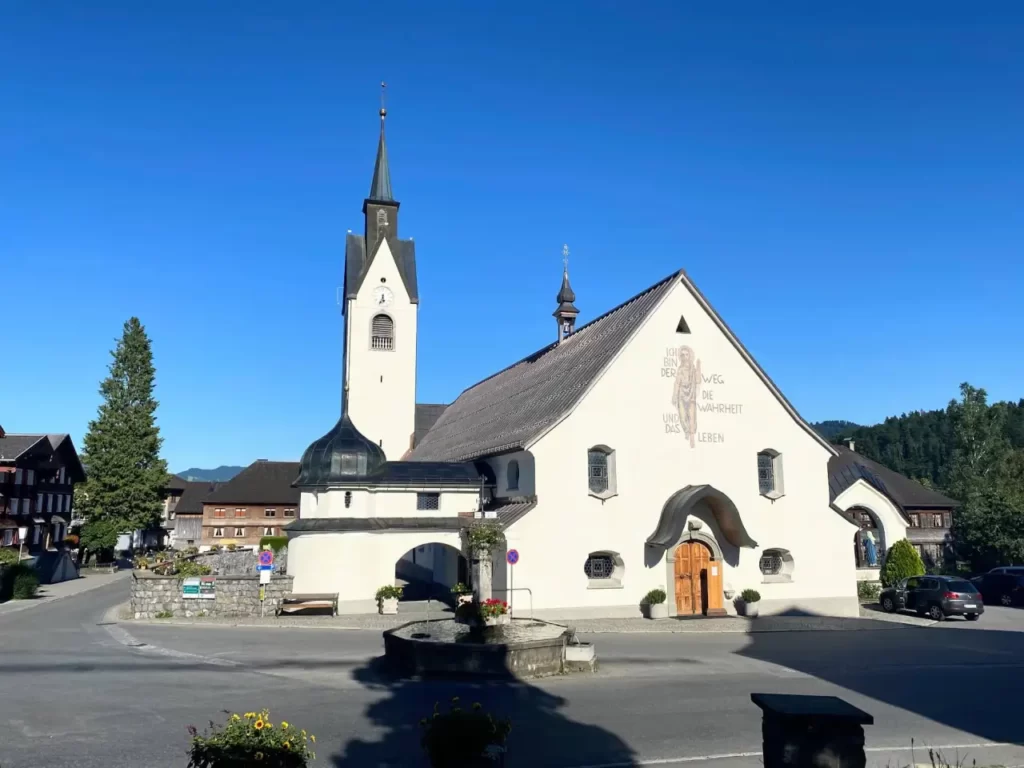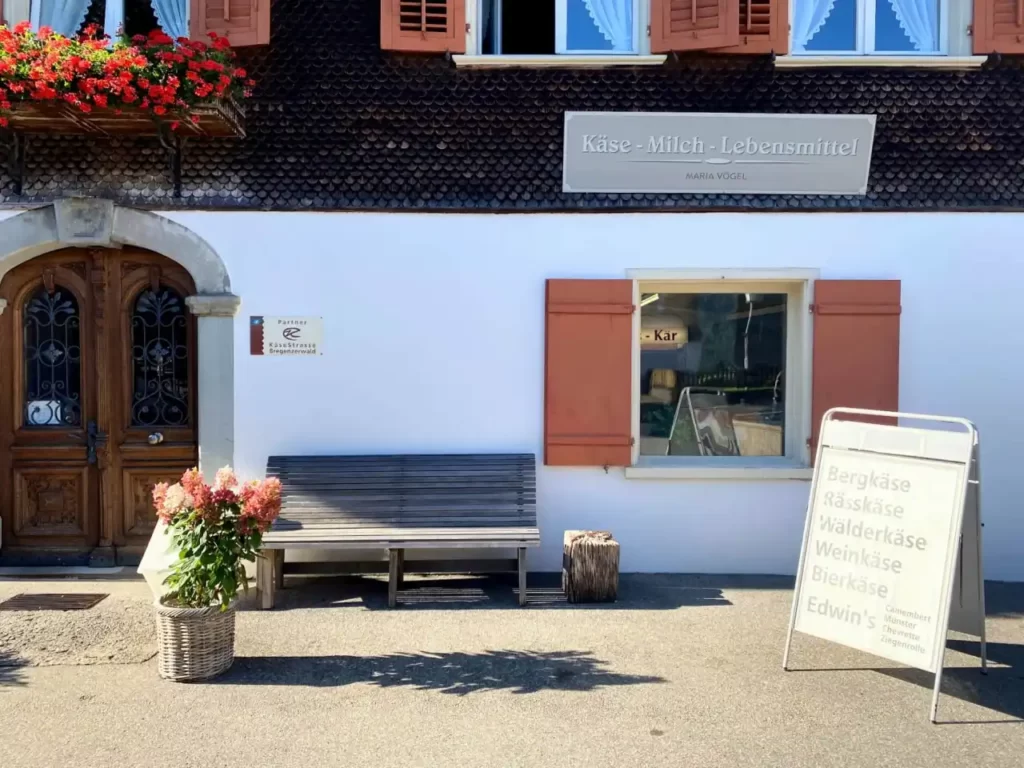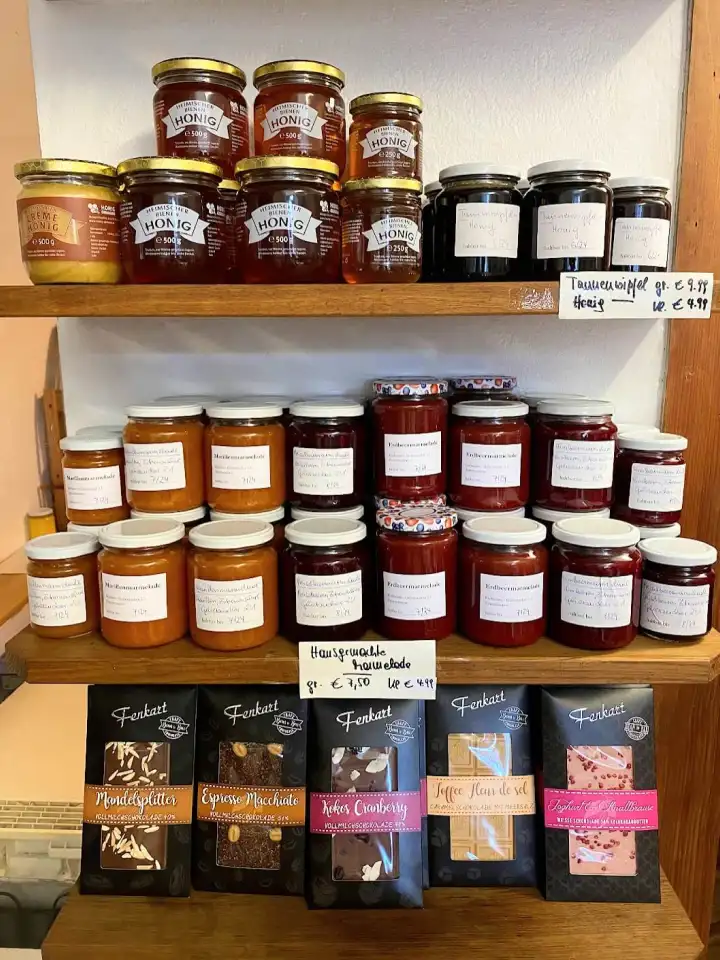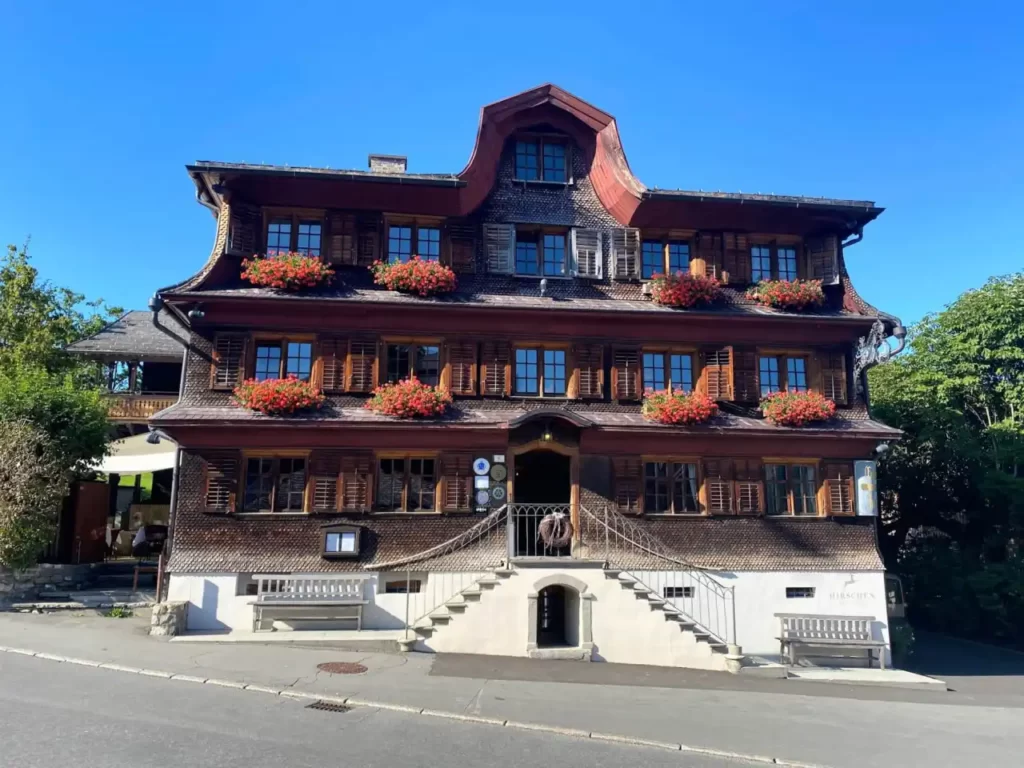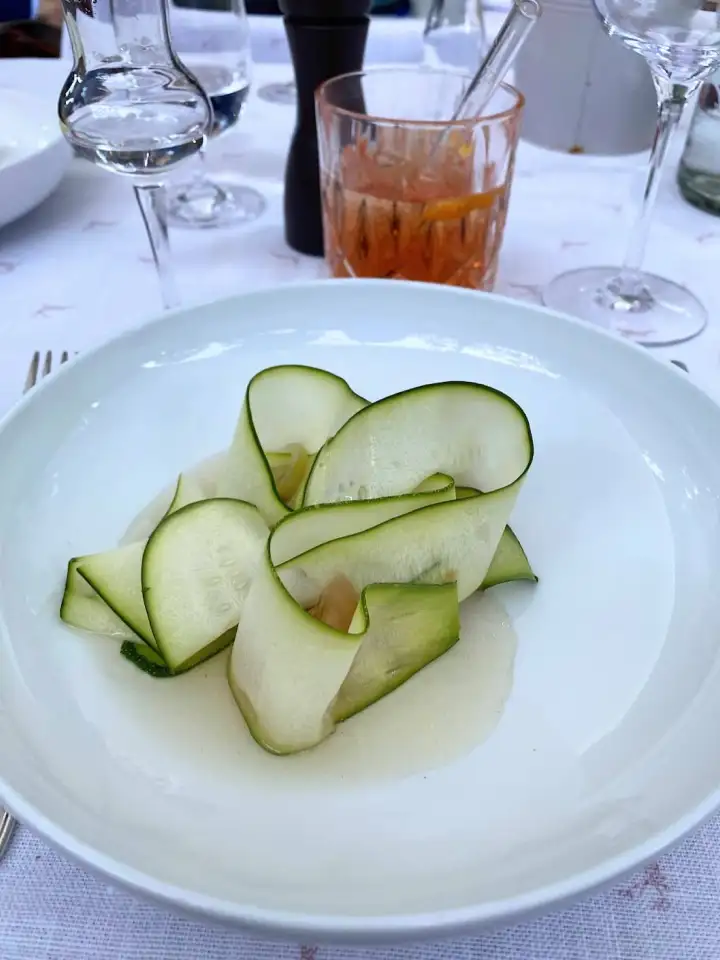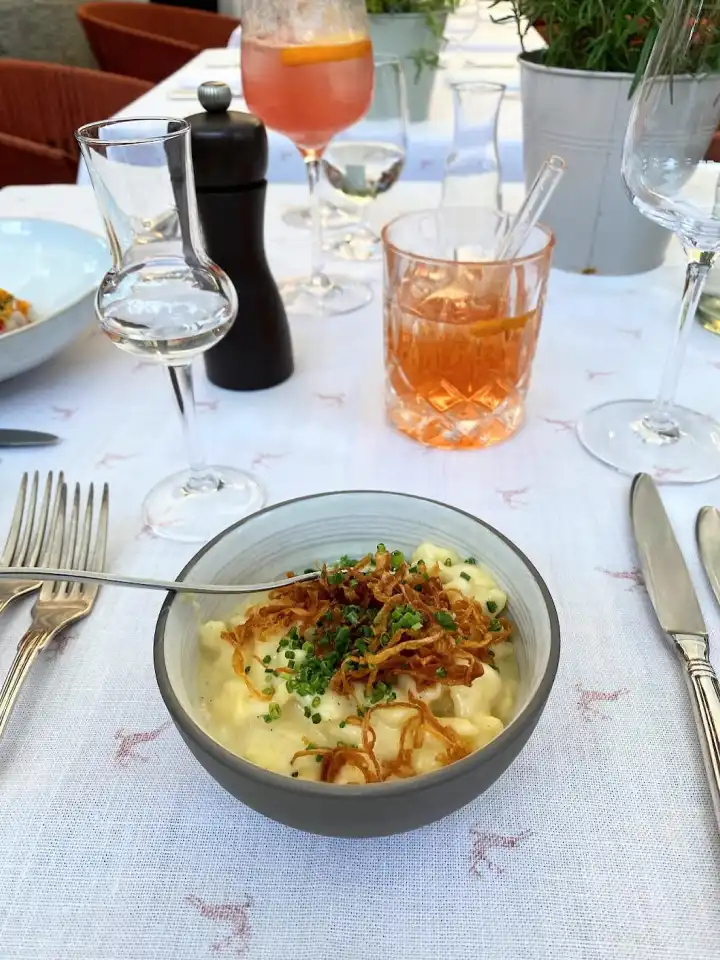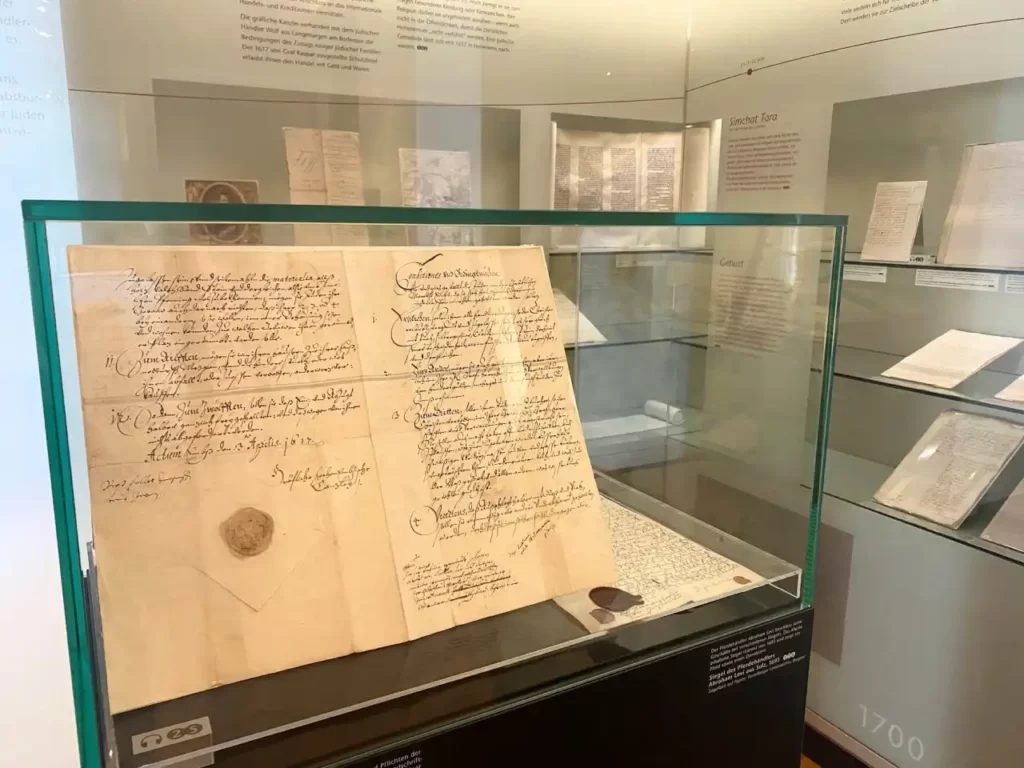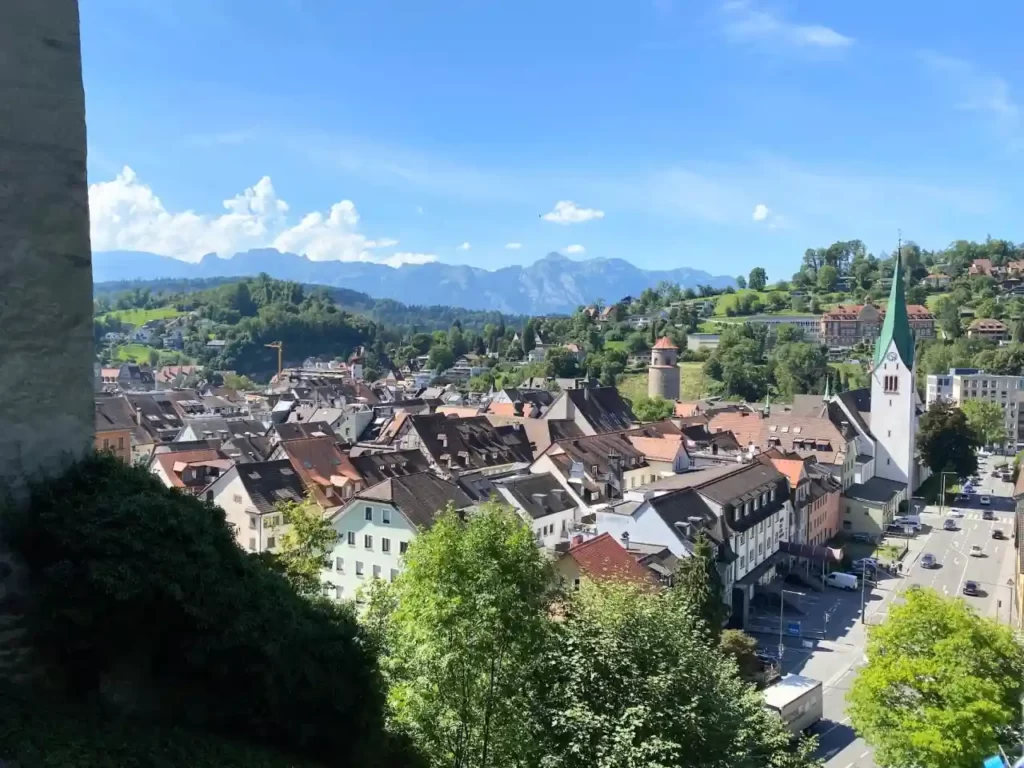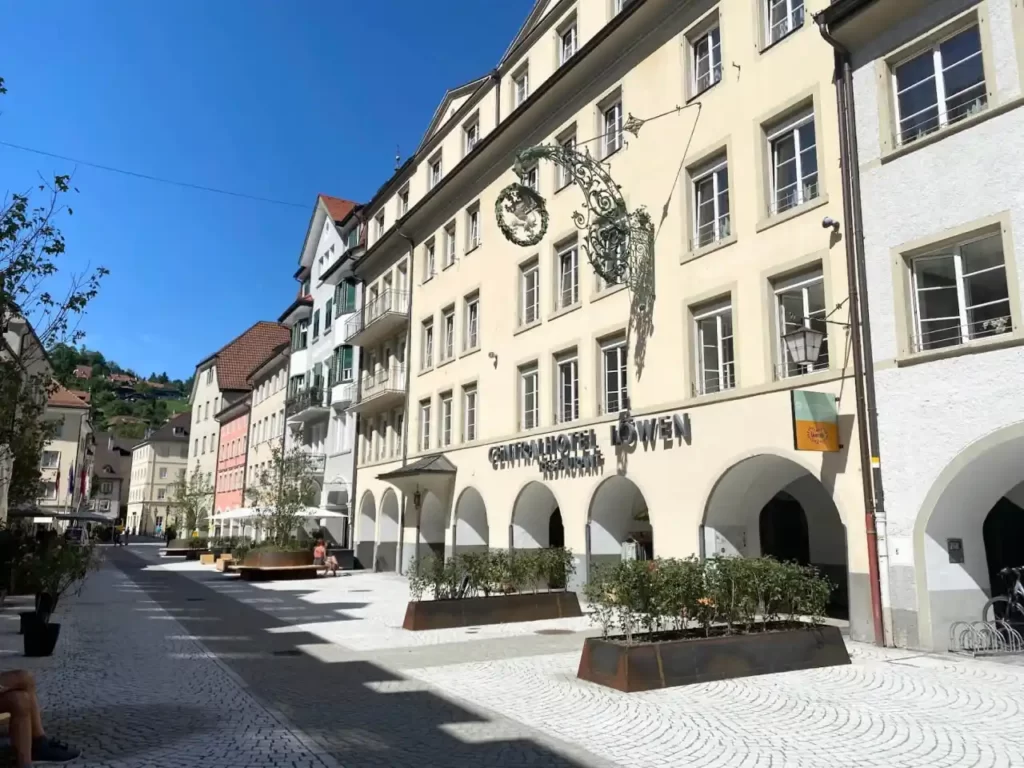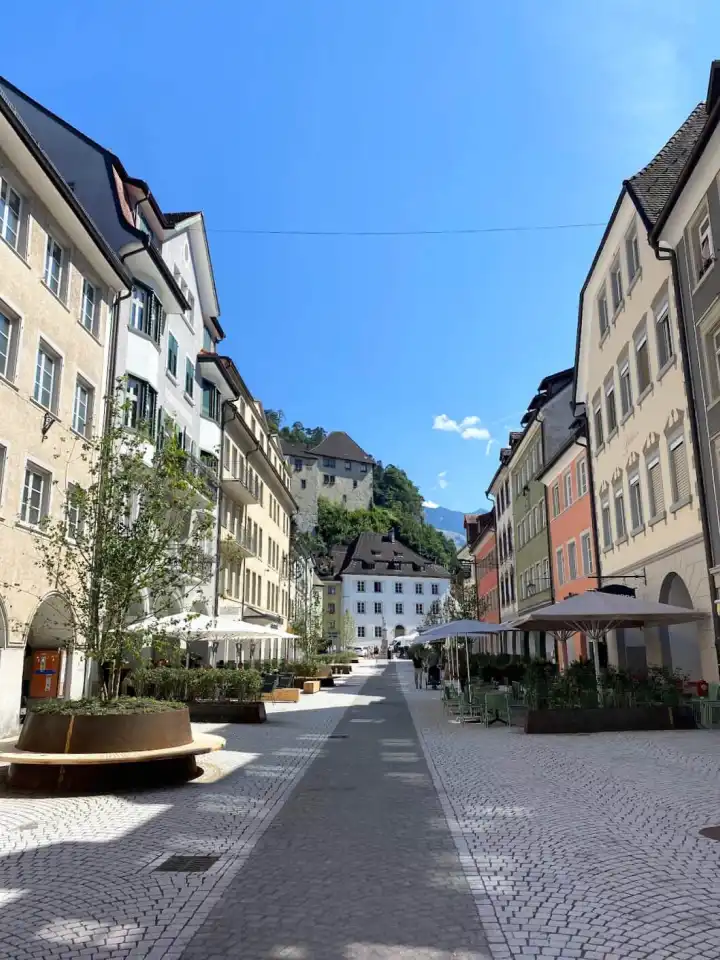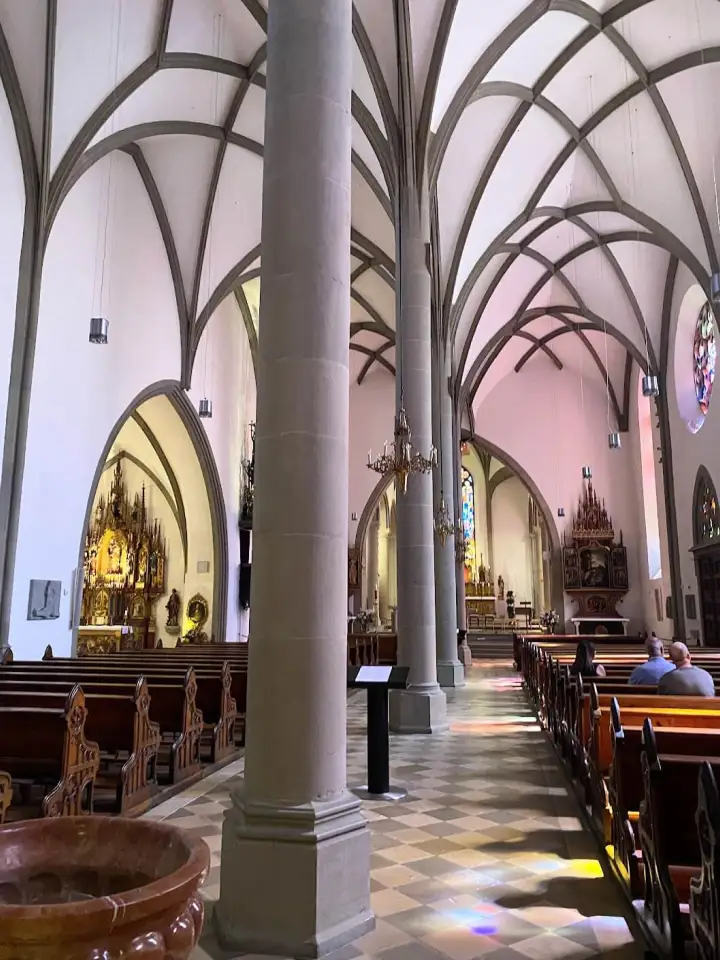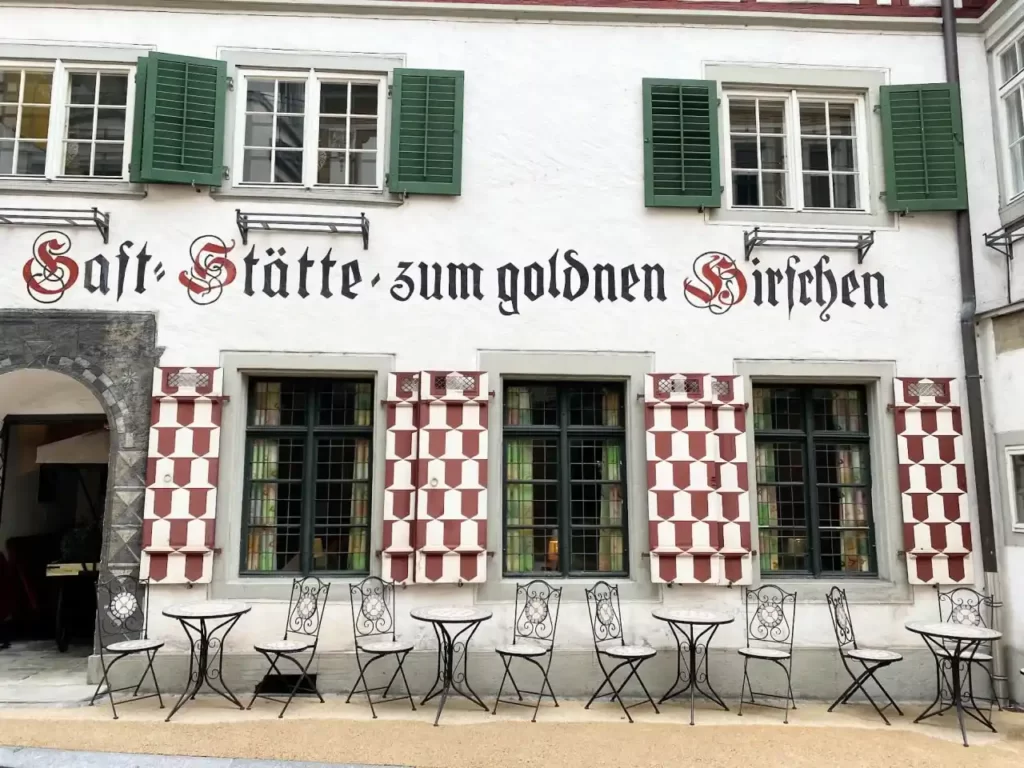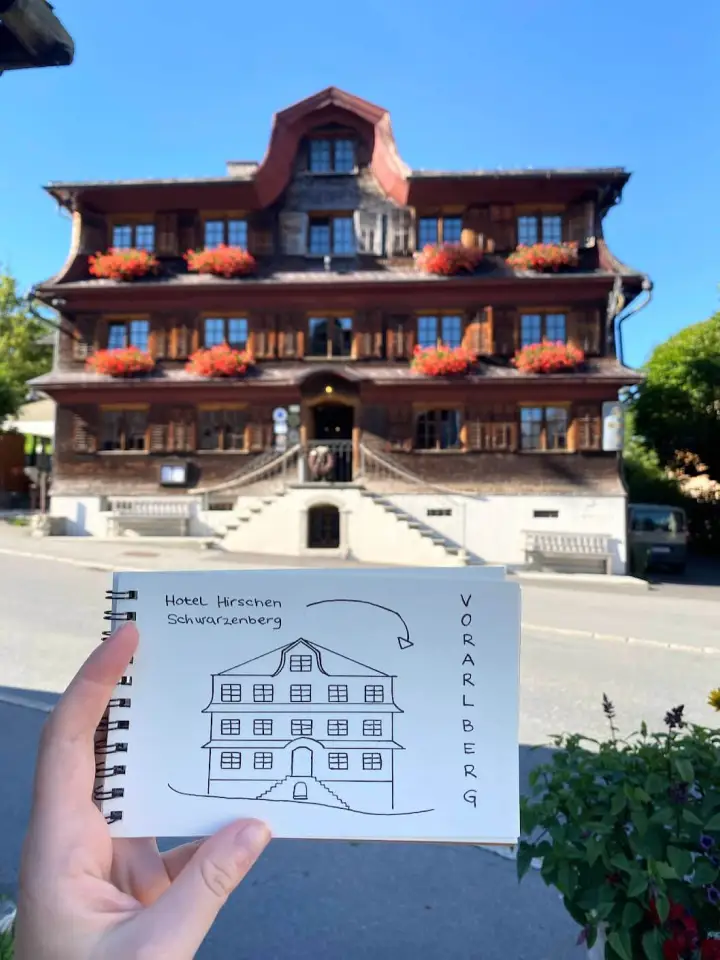Have you ever planned your next trip to a particular destination in detail while still on holiday in that same place? Well, that happened to me while visiting the Vorarlberg region last week. The westernmost part of Austria is home to stunning nature, picturesque towns and villages, fantastic culture and museums, numerous excellent restaurants and friendly locals. I enjoyed every moment of my trip to Vorarlberg and fell in love with that beautiful region. Here is my travel journal with tips on what to see in the Vorarlberg region in Austria.
What to see in the Vorarlberg region in Austria
Vorarlberg is a great place to visit because there is so much to see in the Vorarlberg region. While driving through it, every few seconds, a new stunning view of mountains would mesmerise me for a moment. Whichever museum I visited had a fantastic exhibition. But, what fascinated me the most were the locals. I could feel their love for their region in how they talked about and cared for it.
⤷ Read more: Cultural tourism explained – How to be a cultural tourist
Tourism in Vorarlberg region
One of the reasons I loved visiting the Vorarlberg region so much was because of the way they are approaching tourism. If I needed one word to describe tourism in Vorarlberg, it would be authenticity. Vorarlberg feels real!
I haven’t seen any sightseeing buses, poor-quality restaurants catering only to tourists or mass-produced souvenirs. In the centres of towns like Bregenz or Feldkirch, there were no large store chains or franchise restaurants. I even haven’t seen any international hotel chains.
It was such a breeze of fresh air to stay in a local hotel serving food from regional farms for dinner. The wine I was offered when I checked in was locally produced and inspired by the Madame Butterfly opera, which is currently on stage at the Bregenz Festival. The toiletries in my room were also from a local producer. And I liked it so much that I could purchase some of these things in a hotel and take them home as a souvenir.
I had a similar experience in all the places I visited. In local restaurants, you can enjoy the local cuisine and taste, for example, a mushroom ragù while drinking a rhubarb lemonade. I loved strolling the streets of Bregenz and window shopping the unique stores selling locally made products, like wooden home decor, chocolates or beers.
Vorarlberg provides such a good lesson in tourism by putting its residents, sustainability and local heritage in focus.
Watch my video about the cultural sites you shouldn’t miss in Vorarlberg region:
Bregenz
Although not the largest town in the area, Bregenz is the Vorarlberg region’s capital and where I started my visit to it. It’s a lovely town surrounded by mountains on one and Lake Constance on the other side. The lake gives it a Mediterranean feel. It’s home to a marina with yachts you can often see sailing on a lake, too.
Bregenz is an old town inhabited already by the Celts and Romans. Although there are no Roman ruins you can see around it, it was an important municipality named Brigantium back then. Vorarlberg Museum has an interesting permanent exhibition dedicated to that part of the town’s history. A public statue at the promenade next to Lake Constance is also dedicated to its Roman heritage.
⤷ TIP: If you’d like to enjoy the panoramic view of Lake Constance, Bregenz, and surrounding mountains, take a ride with Pfänder Cable Car. Once on its upper stop, you’ll have one of the most beautiful views of the Vorarlberg region.
Bregenz Upper Town is uphill from Lake Constance, offering an excellent panoramic view. Its narrow streets and typical wooden-been houses showcase the Bregenz medieval history. One of its most interesting buildings is Deuringschlössle, a medieval castle rebuilt in the Baroque time.
Built by Romans, Saint Martin Tower (Martinsturm) was rebuilt a few times throughout history. A chapel on its ground floor is home to some fascinating 14th-century wall paintings. On its top, you’ll find the largest Baroque bulb-shaped tower in Central Europe.
While strolling down to the Bregenz Lower Town, I wandered around beautiful picturesque streets, historic buildings and public art.
One of my favourite local shops in Bregenz was Xocolat. It’s a small chocolate manufacturer creating some of the most delicious and creative chocolates.
Another unique local place I loved was Milchpilz in Bregenz. It’s a mushroom-shaped kiosk where you can buy different kinds of flavoured milk. I tried the coconut chocolate one and loved it! These kinds of stalls in the shape of mushroom selling milk and dairy products were common in West Germany and Austria in the 1950s. The one in Bregenz is the last in Austria, still having its original purpose.
Bregenz left an impression of a liveable town. Its numerous water fountains and vast pedestrian areas reminded me of Basel in Switzerland. That’s also visible in many interesting modern buildings erected in Bregenz during the last few decades.
With its fantastic museums, public art, and many festivals and performances, Bregenz is also the cultural capital of the Vorarlberg region.
Kunsthaus Bregenz is one of the leading European contemporary art galleries. Opened in 1997, the building was designed by the Swiss architect Peter Zumthor. He created a neutral cube that could be adjusted for contemporary exhibitions. I was especially amazed by how he used natural light to illuminate the gallery’s interior. Kunsthaus Bregenz doesn’t have a permanent display but hosts around four temporary exhibitions each year.
Next to it is the Vorarlberg Museum, dedicated to the region’s art, history and culture. With its facade texture made of models of plastic bottle bottoms, its architecture is also interesting. The museum has various permanent and temporary exhibitions offering insight into this beautiful region. Located on its top floor, the Panorama Room, provides a fantastic view of Lake Constance.
⤷ TIP: If you’re looking for a nice place for brunch, both museums have lovely restaurants. Kunsthaus’ restaurant is located outside its building. You can enjoy the view of the museum from its lovely terrace. Vorarlberg Museum cafe has a great selection of cakes, fruit yoghurts and salty dishes.
This town is well known for the Bregenz Festival, organised annually in July and August. It’s unique because of its stage, built on a lake. During my visit, they were showing Madame Butterfly. With its fantastic stage design, great production and amazing cast, it was one of the best operas I have ever seen.
⤷ Read more: 10 Things to do in Bregenz
Bregenzerwald
Vorarlberg region in Austria offers a fantastic combination of nature and culture. And you can especially feel that in the Bregenzerwald area. While driving through it, I was amazed by its scenery. It’s home to high mountains covered with forest and traditional and modern wooden houses that fit perfectly in that landscape.
While walking around some of the smaller places, I could constantly hear the bell sound in the distance. It took me some time to realise these were cows (they have bells around their necks) the area is filled with.
Krumbach bus stops
The first place I visited was Krumbach which I especially looked forward to seeing because of its bus stops. In 2010, an initiative started to rebuild the old bus stops in the village. The locals had quite an idea of how they wanted the bus shelters to look. Seven international architects were called to design these buildings. The result is some fantastic bus shelters located in the beautiful scenery of Vorarlberg.
Georunde Rindberg trail in Sibratsgfäll
One of the locations in Vorarlberg where you can feel the connection between nature and culture incredibly well is the Georunde Rindberg trail in Sibratsgfäll. In 1999, due to the heavy rain that fell for days, the earth moved and changed the landscape of this area. Some houses still standing dragged for a few metres, while some were destroyed.
Cultural hikes were created around the area to mark these scars in the landscape. Several art installations and info panels were placed alongside them, providing information about what happened in the area.
Women’s Museum Hittisau
In Vorarlberg, culture is reserved for more than urban areas, so you can also find fantastic museums in small villages. One of these places is the Women’s Museum in Hittisau. The museum displays a few temporary exhibitions each year. During my visit, they hosted an exhibition called ‘Blitz Blank! On cleaning – inside, outside, everywhere’. I loved how through the universal and not-so-vital theme of cleaning, they opened many essential questions like gender equality, racism, empowerment, etc.
Werkraum Haus in Andelsbuch
Being a region where modern architecture is cherished and developed, it comes as no surprise you can find so many fantastic modern buildings built by renowned international architects in the Vorarlberg region. For anyone interested in architecture, furniture design and local crafts, Werkraum Haus in Andelsbuch is a place to go. Located in a building designed by the same architect who created the Kunsthaus in Bregenz, its architecture connects the interior and the nature surrounding it so well. Werkraum is an exhibition space, cultural centre and a place for local craftsmen to exchange ideas, learn from each other and sell their work.
⤷ TIP: The Werkraum Haus shop is a great place to buy products made by local craftsmen making a wonderful souvenir from the Vorarlberg region. It’s also home to a great bistro which could make a perfect lunch stop during your trip to the Bregenzerwald area of Vorarlberg.
Angelika Kauffmann Museum
Angelika Kauffmann Museum is another fantastic cultural institution located in the countryside of Bregenzerwald that should be noticed during your visit to the Vorarlberg region. A famous Swiss 18th-century artist, Angelika Kauffmann, spent some time there because her father was from the area. A museum dedicated to the renowned painter is located in a typical historical house from the region. You can learn about her life and see some of her paintings while there. A part of the museum is also dedicated to the region’s cultural history, which is absolutely worth exploring.
⤷ Read more: 16 Inspiring female artists from history
Schwarzenberg
During her time in the region, Angelika Kauffmann worked with her father, who was also an artist, on painting the frescoes at the church in Schwarzenberg, which can still be seen today.
Schwarzenberg is one of Bregenzerwald’s picturesque villages, filled with traditional wooden houses, local stores and great restaurants, surrounded by mountains and beautiful nature. I took a walk around it and enjoyed its scenery. At its centre, I found a lovely shop where you can taste cheese and buy local products such as jams, milk and dairy products, spices, etc. I bought a nice pine needle-infused honey made by the shop owner herself.
After wandering around Schwarzenberg, I had dinner at one of its oldest guest houses, Hotel Gasthof Hirschen. It’s a fantastic hotel and restaurant today. It has a great combination of historical architecture and excellent modern interior design. Its fine dining restaurant with a beautiful terrace was a perfect place to finish my visit to the Bregenzerwald area of Vorarlberg.
Jewish Museum in Hohenems
Public transport is excellent in Vorarlberg, so I used it to explore much of the region. After breakfast on my last day in the Vorarlberg region, I took a train and went to Hohenems, where I visited the Jewish Museum and strolled through its Jewish Quarter. I liked the museum a lot because besides telling the history of Jews in the area, it also opens the questions of dealing with complex history, prejudice, accepting others, etc. Themes which are still very much on the topic today.
The museum also encourages its visitors to explore the area and learn more about the history of Jews that used to live there. You can even borrow a bicycle from the museum and ride it to the cemetery, which is a bit further away. I stayed closer to it and visited the former Jewish synagogue and Mikvah in the town centre.
During my visit, the museum had a fantastic temporary exhibition about four Palestinian women who came to study in Tel Aviv. The photographer Iris Hassid followed them for several years, documenting their life. It’s a fascinating insight into their lives that changed how I imagined Palestinian women’s lives in Israel.
⤷ TIP: Bio-Restaurant Moritz is a great place for lunch in Hohenems. Located next to the Mikvah and inside the former Jewish school, it offers excellent food and drinks in a lovely environment.
Feldkirch
After exploring the Jewish history in Hohenems, I hopped on a train again. I went to the Vorarlberg’s medieval gem – the town of Feldkirch. The town was first mentioned in the 13th century when Count Hugo von Montfort built the Schattenburg Castle. The old castle still stands above the Feldkirch town centre today. I enjoyed a beautiful view of the medieval town centre and the surrounding mountains in Switzerland and Liechtenstein from there. While looking at Feldkirch from above, I could still recognise the medieval setting, houses and typical pitched roofs very well. The castle is home to a nice museum today where you can learn about the town’s history and life in the past.
A walk through Feldkirch takes you to some beautiful historical places. My first stop was the old town hall, where I saw a historical painting of Feldkirch. I couldn’t help but notice how little the town changed throughout the centuries.
The most surprising building for me was the Feldkirch Cathedral. It’s a two-nave church, which I have never seen before. Although it may seem unusual to have pillars in the middle of the church, it works very well. It’s also home to some interesting altarpieces and beautiful stained glass windows.
Like in the rest of the Vorarlberg region, old buildings coexist with modern ones in Feldkirch. One of the most impressive ones is Montforthaus, built in 2012 and used as a cultural and congress centre.
Tips for visiting the Vorarlberg region in Austria
⤷ Public transport: Public transport is excellent in the Vorarlberg region! You can get everywhere by train or bus, it’s frequent and easy to navigate. I used city buses in Bregenz and bought bus tickets on a machine within the bus. You can get a day ticket for the train like I did on a day when I travelled to Hohenems and Feldkirch from Bregenz. Check the trains’ timetable at the OBB website.
⤷ Guest Card Bregenzerwald: If you visit Bregenzerwald until 31 October 2023 and stay in the region for at least three nights, you can get the Guest Card Bregenzerwald for free. It includes free public transport, free admission to all the cable cars and outdoor swimming pools.
⤷ Souvenirs from Vorarlberg region: Vorarlberg region’s residents are proud of its heritage and crafts, so you’ll find some great souvenirs to take home with you. If you like edible souvenirs, chocolates from Xocolat, local honey and jams, locally produced wines or some of the delicious cheese from this region could be a way to go. All the museums I visited had great shops with numerous nice arty things to take home with you. Or, if you’d like something from local craftsmen, visit the Werkraum Haus’ shop.
⤷ Purchase your Bregenz Festival tickets in advance: Bregenz Festival is a popular event. So, if you would like to attend one of the shows, purchase your tickets online in advance. My other tip here is to bring warm clothes with you. Located on a lake, it could get chilly once the sun sets, so bring your warm jacket or a little blanket.
How to get to the Vorarlberg region in Austria
⤷ By train: I took a night train from Zagreb to Feldkirch and loved travelling that way. The region is well connected by train, so check connections from your area to get there.
⤷ By plane: Zürich (Switzerland) and Memmingen (Germany) are the closest international airports.
⤷ By car: You can also visit the region by car. The roads are good and well marked, so driving around shouldn’t be a problem. However, if you want to travel more sustainably, you won’t have any issues by coming by and exploring the region on public transport.
Where to stay in the Vorarlberg region in Austria
During my visit to the Vorarlberg region, I stayed in Bregenz. The city has lots to offer, and it was a great starting point for exploring the Vorarlberg region. I stayed at the Hotel Schwärzler in Bregenz. It’s a 100% climate-neutral hotel with a great interior design and delicious breakfast.
If you’d like to stay in the countryside, I recommend Hotel Gasthof Hirschen in Schwarzenberg. It’s an art hotel located in a historical house. However, it has a modern interior design and a fantastic restaurant. During my visit, I had a chance to peek into some of its rooms, and they are beautiful.
Vorarlberg region exceeded my already high expectations, and I enjoyed every second of my visit. With its beautiful nature, high-level art and culture, focus on sustainability and preserving local craftsmanship, it’s a fantastic place to visit. I hope this article will help you plan what to see in the Vorarlberg region.
I visited the Vorarlberg region in Austria on a press trip organised by Vorarlberg Tourismus and their partners, Bodensee Vorarlberg Tourismus and Bregenzervald Tourismus. Many thanks to all of them for organising such a wonderful trip for me. As always, all opinions are my own.

